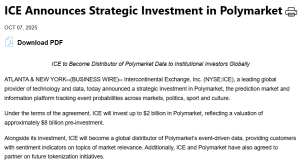Zero Knowledge Proof Cracks AI’s Privacy Problem: The Smart Choice Over Chainlink & Cosmos Volatility
Market watchers are glued to Chainlink (LINK) price charts and Cosmos (ATOM) momentum indicators, hunting for short-term trading signals in the daily noise. But here’s the question that matters: does this obsession with established tokens blind investors to a technological breakthrough happening right now?
Zero Knowledge Proof (ZKP) offers a fundamentally different value proposition. This isn’t another speculative token chasing hype cycles. Its infrastructure solves AI’s biggest vulnerability: privacy. With over $100 million already deployed by the development team into hardware and network architecture, Zero Knowledge Proof (ZKP) provides the missing foundation for private, decentralized artificial intelligence at scale.
For investors identifying the best crypto to buy based on real utility serving a trillion-dollar industry, this project demands serious attention. The whitelist is open right now, offering early access before the broader market catches on.
Zero Knowledge Proof: AI’s Essential Foundation
The global AI arms race is heating up fast, but it carries a fatal flaw buried in its core: every major platform demands users sacrifice their data. Zero Knowledge Proof (ZKP) blockchain exists specifically to eliminate this compromise. This isn’t experimental technology or theoretical infrastructure. It’s a ready-to-deploy, decentralized compute network engineered to power AI tasks without exposing the sensitive information being processed.
The project has already invested over $100 million in building this infrastructure before asking for a single dollar from public participants. That’s not typical in crypto, where most projects sell tokens first and build later, if ever. This emphasis on tangible, operational utility supporting a multi-trillion-dollar technology revolution makes Zero Knowledge Proof (ZKP) a compelling candidate for the best crypto to buy in the current market environment.
The whitelist is open now, granting early participants access to the upcoming presale structure designed around fairness and transparency. Rather than fixed pricing that benefits insiders, ZKP will conduct daily on-chain presale auctions once the presale launches. Every 24 hours, exactly 200 million ZKP coins will be distributed proportionally among all participants based on their individual contribution percentage for that specific day. The process runs transparently on-chain and accepts major cryptocurrencies, including ETH, USDC, USDT, and BNB.
The upcoming presale allocates 90 billion ZKP coins, representing 35% of the total supply. This isn’t a speculative investment in promises documented in a whitepaper. It’s direct access to a network that goes live immediately from day one following presale completion.
Why Chainlink’s Price Contradicts Its Partnership Wins
Chainlink (LINK) is delivering confusing, contradictory signals this month. The project announced genuinely impressive adoption milestones, including strategic partnerships with FTSE Russell, the global index provider, and collaborative initiatives with UBS focused on tokenized fund infrastructure. These developments validate Chainlink’s expanding institutional footprint and cross-chain relevance in traditional finance.
Yet the Chainlink (LINK) price structure moved in precisely the opposite direction. After trading near $17.59 on November 3, LINK suffered a brutal technical breakdown on November 4, collapsing through its $15.26 support level in a single session.
Market analysts attributed this drop primarily to broader altcoin weakness as capital rotated heavily into Bitcoin. As of November 5, the price struggles to defend a new critical support zone between $14.50 and $14.60. The immediate Chainlink (LINK) price structure remains decidedly bearish, with the previous $15.26 support now flipped into resistance, creating the first barrier for any recovery attempt.
Cosmos Slides Lower Despite Ecosystem Momentum
The Cosmos (ATOM) price momentum turned decidedly negative in early November, with the token sliding into the $2.60 range by November 5. Technical analysis paints an unmistakably bearish picture, showing ATOM trading well below all significant moving averages across multiple timeframes.
Price action on November 4 confirmed this downtrend, with momentum indicators flashing strongly oversold readings as the asset broke down further. This selling pressure has proven persistent and unrelenting, reflecting the broader market pattern of capital abandoning altcoins.
On November 3, the Cosmos ecosystem received prominent featuring at a major blockchain summit in Abu Dhabi, typically the kind of exposure that generates short-term buying interest. Instead, the announcement failed to provide any price support or slow the descent whatsoever.
Community attention has now shifted entirely to the upcoming “Sovereign Day” event scheduled for November 6. However, until that event delivers a genuine catalyst capable of shifting sentiment, the Cosmos (ATOM) price momentum remains locked in a clear downtrend with no reversal signals visible.
Why Infrastructure Beats Price Action Every Time
The current market reveals a glaring disconnect between fundamentals and technicals. The Chainlink (LINK) price structure shows technical weakness and bearish momentum despite announcing major institutional partnerships that strengthen its long-term positioning. Simultaneously, the Cosmos (ATOM) price momentum continues grinding lower, completely ignoring positive ecosystem developments and following the broader altcoin selloff.
This volatility underscores why a different investment approach makes sense right now. With over $100 million already deployed, building the network for private AI computation, Zero Knowledge Proof (ZKP) delivers tangible utility from the moment the presale concludes and the network activates. No waiting. No multi-year development roadmaps. No, hoping the team follows through on promises.
For investors seeking the best crypto to buy based on a finished product targeting a genuine trillion-dollar industry need, rather than gambling on short-term chart patterns, Zero Knowledge Proof (ZKP) presents a persuasive alternative.
Find Out More At: https://zkp.com/
This publication is sponsored. Coindoo does not endorse or assume responsibility for the content, accuracy, quality, advertising, products, or any other materials on this page. Readers are encouraged to conduct their own research before engaging in any cryptocurrency-related actions. Coindoo will not be liable, directly or indirectly, for any damages or losses resulting from the use of or reliance on any content, goods, or services mentioned. Always do your own researchs.
The post Zero Knowledge Proof Cracks AI’s Privacy Problem: The Smart Choice Over Chainlink & Cosmos Volatility appeared first on Coindoo.
You May Also Like

Bitcoin Breaks Below $100K But Stablecoin Inflows Hint at Quiet Re-Risking

Polymarket To Provide UFC, Zuffa Boxing With Real-Time Fan Predictions
